Football, showcase of world technology
Technology in the feet
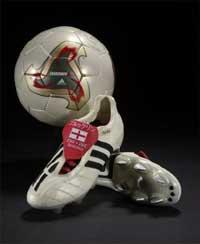
Since the 1970 Mexico World Cup, Adidas has designed a new ball for each world championship. Over the years, the latest technological advances have been integrated into the design of the ball and the shape and properties of the balls have evolved dramatically.
As for the shape, the ball Fevernova (fever) this year is the greatest novelty that has been known, unlike so far, that is a circular ball. Apparently, the traditional black and white pentagon balls were not totally spherical.
But in addition to its outward appearance, the new ball has new properties. At this level, the evolution of the balls has been much more spectacular. The balls of the 1960s were very heavy. This was not an obstacle to the nice plays for Pelé and other players, but these balls caused more than one injury.
Over the years the regulation of ball production has not been modified, which has to weigh less than 453 grams and have a circumference less than 71 cm, but the materials have been changing. Thus, the balls have been gaining in precision and speed.
The new ball is made of a new synthetic rubber and the cells are filled with compressed air. Thus, by focusing the energy is distributed evenly throughout the sphere, which increases the speed of the ball. Fevernova seems to be 10% faster and 25% more accurate than the ball used in the French World Cup.
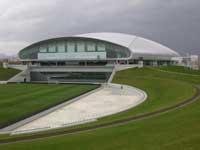
As for the shoes, Nike and Adidas have taken advantage of the world competition to take the sportswear of the latest design. Pelé and Maradona did not have the help of technology to win the world championships, and although current players will also have to make it their own, players with sneakers weighing less than 196 gr will have a small advantage to run on the field. Nike Skin shoes do not catch water and last 50% longer than synthetic leather. In the shoes pulled by Adidas have changed the location of the studs, allowing to make the rotations faster. Kangaroo leather and new rubber materials have been used for the manufacture of these shoes.
The most modern football fields
The football world cup matches will be played in twenty stadiums, ten in Korea and ten in Japan. But neither Japan nor Korea have much tradition of football. Thus, several baseball and athletics stadiums have had to become football fields and build others.
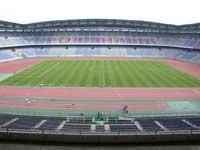
For this, it is estimated that Korea has invested $2 trillion and Japan $9 trillion. But the organization and politicians have announced that these investments also deserve at the end of the championship. In fact, the Kobe stadium (Japan), for example, has stands for 42,000 people, but it is built so that it becomes a smaller stadium, so it can also be used once the championship has passed.
But the Japanese have done much more than that: have designed the world's first mobile field! The natural grass field rests on several rails and is conditioned for the Sapporo baseball stadium. Two hours before playing the football game, the stadium stand opens and the field slides down the rails. Then, thanks to a rotating system, the baseball stadium is placed in the right position with respect to the public and becomes a football stadium.
Another natural grass meadow is the Yokohama field, where the final will be played. This meadow is built on layers of rock of different sizes and lands that guarantee a good filtration of the water. In addition, in order for the green area to be able to play a game at all times, a system of hot water in the ground allows obtaining the optimum temperature for the grass. It will be a natural herb, but it cannot be said to be a naturally obtained herb! However, it is not the first time that such a technique is used to keep the field in good condition.
Journalists also remember

Also, considering that the world championship will be visited by thousands of people from all over the world, architects have not forgotten to build the necessary infrastructure for television. In the stadium of Yokohama (Japan), where the final will be played, they have moved at full speed (one hundred meters in seven seconds) and installed a video camera that records without losing quality. The fastest player also does not escape his eyes.
Internet connection will not require cable. To facilitate the work of journalists, all football stadiums have been equipped with the wireless area system. Wireless area allows the Internet connection of laptops without plugging them into the network using a card. This way, the journalist can send and receive emails from anywhere in the stadium.
Wireless area system for wireless internet connection
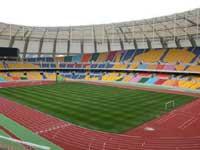
All stadiums in which the world matches will be held are equipped with the Wireless area system, which will prevent journalists from having to run right and left to send their articles and reports.
The Wireless Area is very similar to the mobile phone system. Access points are installed in different locations (similar to antennas in the mobile phone system) and, where there are no obstacles, serve a radius of 150 meters. Depending on the barriers, this area is reduced.
Information from the computer to the access point is transmitted by radio frequency and each access point is wired to the data network, as if it were another computer. Each access point costs 68,000 pesetas and can transmit 11 Mb per second. These 11 megabites are distributed among connected users, so the more users connect to the access point, the slower it will work.
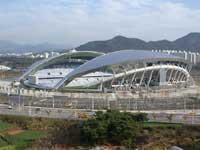
To connect the laptop to the access point, a card is inserted into the computer. Each card costs 28,000 pesetas. The organization of the world football championship has distributed these cards to journalists along with accreditations.
It is also a system that is triumphing at European level. In the last count 40,000 access points were counted in Europe and it is expected that by 2005 there will be 90,000 points. It is spreading mainly in libraries, museums, culture classrooms, airports, accommodation, etc.
Posted in Zabalik.
Buletina
Bidali zure helbide elektronikoa eta jaso asteroko buletina zure sarrera-ontzian











